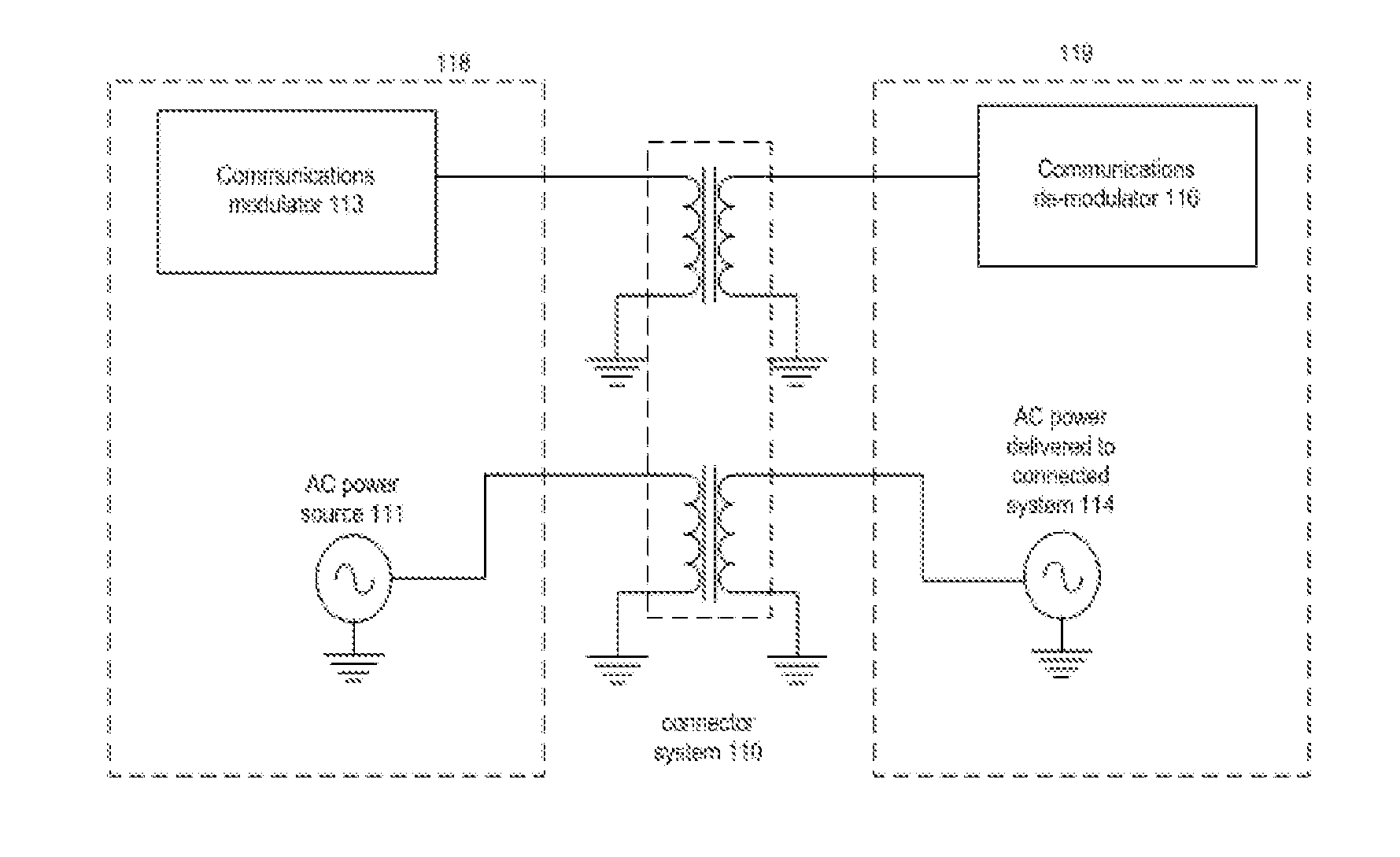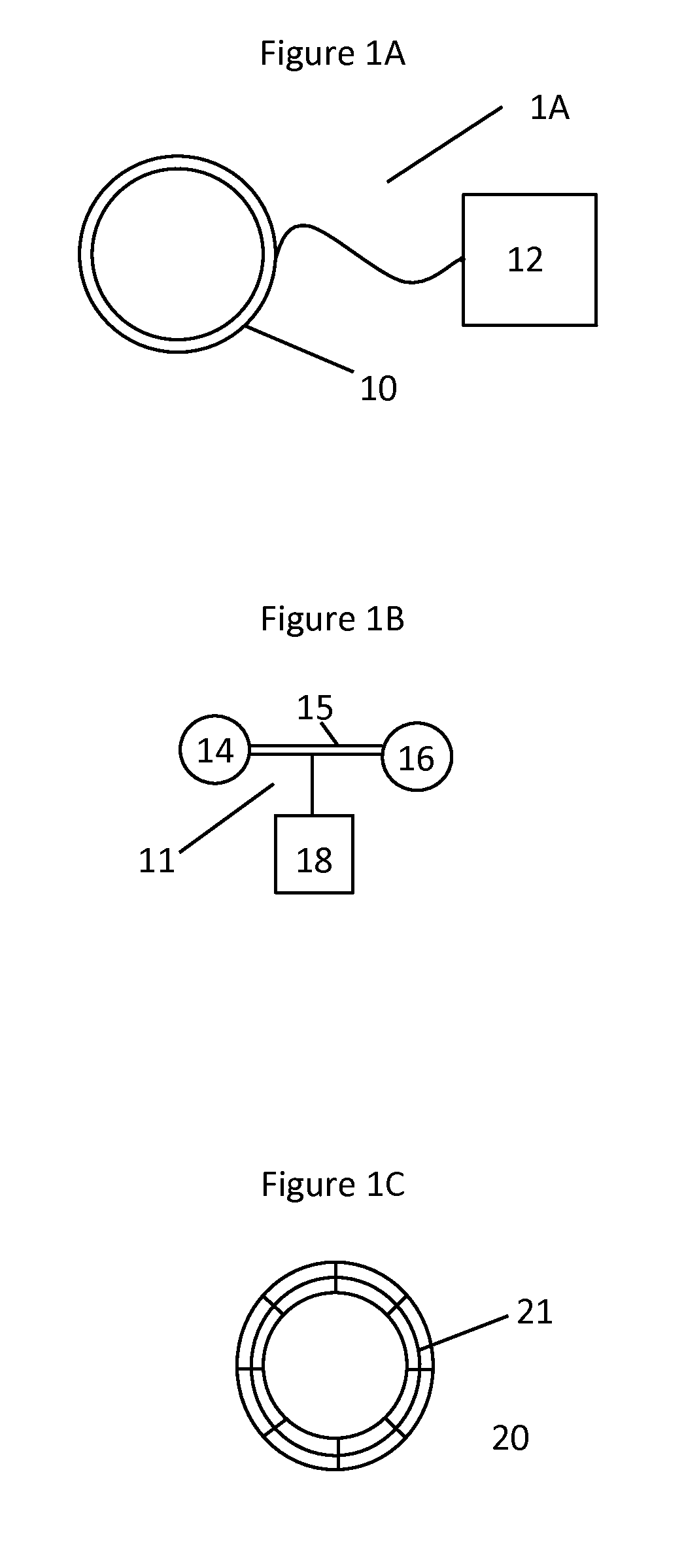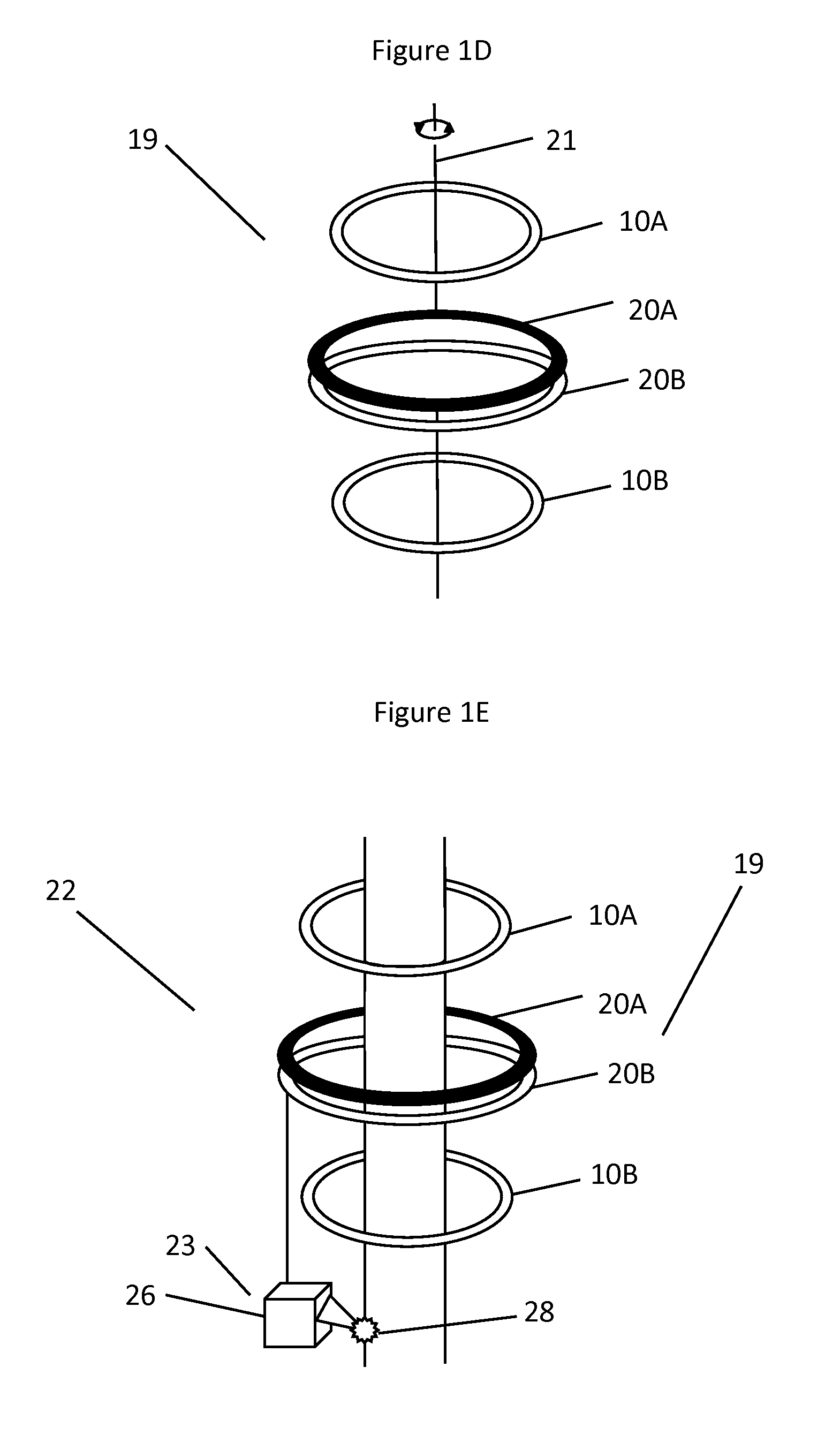Rotary data and power transfer system
a power transfer system and data technology, applied in the direction of transformers/inductances, transformers, electrical equipment, etc., can solve the problems of difficult wet mating connection, difficult requirement, resistance contact point and failure of connector function, etc., to increase the distance over which information can be transmitted, improve data compression, and increase the useful information rate
- Summary
- Abstract
- Description
- Claims
- Application Information
AI Technical Summary
Benefits of technology
Problems solved by technology
Method used
Image
Examples
Embodiment Construction
[0082]In FIG. 1A there is shown an example embodiment of a through water communications element 1A which is in this case has a radio transmission component which in this case is a loop antenna 10 which combines transmit and receive loop antenna windings in a single overall outer jacket. As can be seen, antenna 10 interfaces to radio modem unit 12. In FIG. 1B there is shown an alternative example embodiment of the through water radio communications element 1B which comprises electrodes 14 and 16 connected by cable 3 to form an electric dipole antenna 11 which interfaces with radio modem 18. In FIG. 1C there is shown a rotary transformer element 20 which, in use, interfaces with a similar transformer (not shown) to couple electrical power without conductive contact.
[0083]FIG. 1D illustrates a relative positioning of components arranged for use as one embodiment of an off axis rotary and power transfer system of the present invention. As can be seen, radio modem transducer loop 10A is ...
PUM
 Login to View More
Login to View More Abstract
Description
Claims
Application Information
 Login to View More
Login to View More - R&D
- Intellectual Property
- Life Sciences
- Materials
- Tech Scout
- Unparalleled Data Quality
- Higher Quality Content
- 60% Fewer Hallucinations
Browse by: Latest US Patents, China's latest patents, Technical Efficacy Thesaurus, Application Domain, Technology Topic, Popular Technical Reports.
© 2025 PatSnap. All rights reserved.Legal|Privacy policy|Modern Slavery Act Transparency Statement|Sitemap|About US| Contact US: help@patsnap.com



